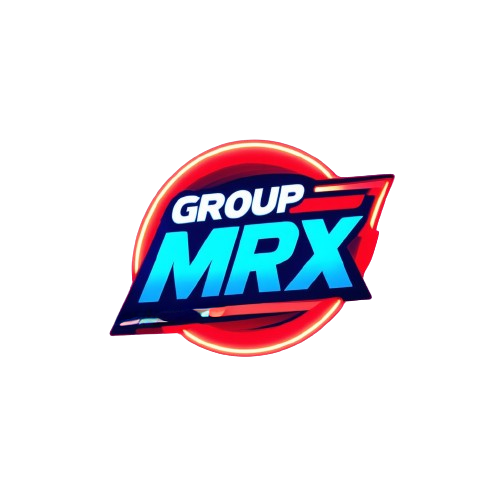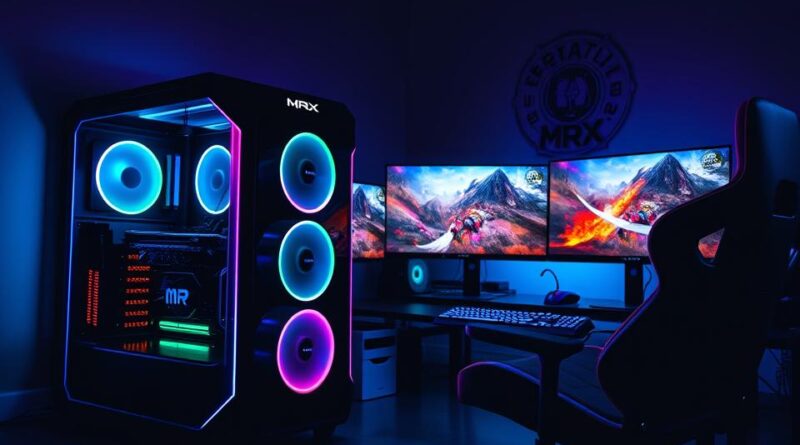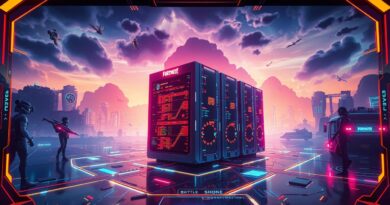Build Your Own High-Performance Gaming Computer: A Comprehensive Guide
Are you ready to boost your gaming experience? Learning how to set up a gaming computer is a great start. Building your own PC can be fun and rewarding. It lets you create a machine that fits your needs and budget perfectly.
Creating a top-notch gaming computer needs careful planning. A detailed guide on setting up a gaming computer will help. It ensures your system runs smoothly and efficiently. You’ll learn how to pick the best CPU, GPU, and other parts for your build.
Key Takeaways
- Building a gaming PC can be a rewarding experience with the right guidance
- A comprehensive gaming computer setup guide can help you navigate the process
- Choosing the right components is crucial for a high-performance gaming computer
- A gaming computer setup guide can provide information on optimizing system performance and reliability
- Building a custom-built machine can meet your specific needs and budget
- A gaming computer setup guide can help you learn how to setup a gaming computer
- Following a comprehensive guide can ensure a successful build
Understanding Your Gaming Needs
Building a top-notch gaming PC starts with knowing what you need. You must figure out your gaming style, what performance you want, and how much you can spend. This way, you can pick the best tips for building a gaming PC and make a system that fits your gaming style.
First, think about the games you like and how fast you want your PC to run. This will help you choose the best components for gaming computers, like the processor, graphics card, and RAM. Also, decide how much you’re willing to spend on your gaming PC.
Here are some key things to think about when figuring out your gaming needs:
- Gaming style: What kind of games do you play? (e.g. FPS, RPG, MMO)
- Performance requirements: What level of performance do you need? (e.g. 4K resolution, high frame rates)
- Budget: How much are you willing to spend on your gaming PC?
By knowing your gaming needs and picking the right parts, you can create a gaming PC that’s fast and fun. It will give you an amazing gaming experience.
| Component | Description |
|---|---|
| Processor | Handles game logic and calculations |
| Graphics Card | Handles graphics rendering and display |
| RAM | Provides memory for game data and applications |
Essential Components of a Gaming Computer
Building a top-notch gaming computer requires key components. The CPU is crucial, as it handles all calculations and instructions. It’s important to balance the CPU, GPU, and other parts for the best performance.
Start by picking a high-quality CPU, like the AMD Ryzen 9 7900X3D or Intel Core i9 14900K. These CPUs excel in gaming and demanding tasks. The GPU, such as the Nvidia GeForce RTX 4090 or AMD Radeon RX 7900 XTX, is also key for graphics and high frame rates.
Key Components for Gaming Performance
- CPU: Handles calculations and executes instructions
- GPU: Renders graphics and achieves high frame rates
- Motherboard: Ensures compatibility and optimal performance
Choosing the right components and optimizing performance leads to a better gaming experience. It’s vital to balance the CPU, GPU, and other parts to avoid bottlenecks and ensure top performance.
| Component | Recommended Specification |
|---|---|
| CPU | AMD Ryzen 9 7900X3D or Intel Core i9 14900K |
| GPU | Nvidia GeForce RTX 4090 or AMD Radeon RX 7900 XTX |
| Motherboard | Asus X670E-E ROG STRIX Gaming Wifi |
Selecting Your Gaming Computer Case
The case is key when building a custom gaming rig. It affects both performance and looks. A good case offers great airflow, cable management, and fits your parts well. Choosing the right case is vital for top performance and easy upkeep.
Think about the case’s size and if it fits your parts. Mini-ITX cases are smaller, perfect for small builds. Micro-ATX cases are a bit longer but still fit well. Standard ATX cases are the most common and work with most parts.
Design and Cooling Options
Good airflow is crucial in a case. It needs vents in the front, back, and top for cooling. Gaming PCs need lots of airflow and places for fans. Brands like NZXT, Corsair, and Fractal Design make great cases for cooling.
Some top case picks include:
- NZXT H510: A mid-tower that fits most builds
- Corsair 4000D Airflow: Known for its ventilation and fan options
- Fractal Design Meshify C: A mid-tower with excellent airflow
Choosing the right case is key for a gaming rig. Look at size, design, and cooling to find the best case. This will give your custom gaming rig a solid base.
| Case Type | Size | Compatibility |
|---|---|---|
| Mini-ITX | Approximately half the size of standard ATX | Compact builds |
| Micro-ATX | Shorter than standard ATX | Greater compatibility |
| Standard ATX | Mid-sized towers | Most common case form factor |
Choosing the Right Power Supply Unit (PSU)
Building a high-performance gaming setup means picking the right Power Supply Unit (PSU). A good PSU ensures your gaming computer gets the power it needs. A reliable PSU is key, as a gaming computer setup guide will tell you.
When choosing a PSU, think about the power needs of your components. This includes your graphics card and CPU. A PSU with 100-150 watts more than needed is a safe choice.
Look for an 80 Plus Gold certified PSU. Brands like Corsair, Seasonic, and EVGA offer these. They ensure high efficiency and reliability. Some top picks are the Corsair RMx RM1000w and Seasonic Prime TX-1300.
- Wattage rating
- Efficiency rating (80 Plus Gold or higher)
- Modularity (fully modular or semi-modular)
- Connectors (SATA, PCIe, CPU power)
Choosing the right PSU means a stable and efficient power supply for your gaming computer. This lets you build a high-performance gaming setup that meets your needs.
| PSU Model | Wattage Rating | Efficiency Rating |
|---|---|---|
| Corsair RMx RM1000w | 1000W | 80 Plus Gold |
| Seasonic Prime TX-1300 | 1300W | 80 Plus Titanium |
Memory Matters: Selecting RAM
Building a gaming PC means paying close attention to RAM. The right RAM can greatly improve your gaming. It’s key to pick the best RAM for your gaming needs.
The capacity of RAM is crucial. For gaming, 32GB of DDR5-6000 C30 RAM is recommended. This can increase frame rates by up to 14% compared to less RAM. Games like Baldur’s Gate 3 and Starfield benefit from this setup.
Optimal Capacity for Gaming
For most gamers, 32GB is the ideal RAM amount. But, power users might need 64GB DDR5-6000 kits. For heavy tasks and gaming, 48GB or 64GB is best.
Memory Speed Considerations
Memory speed is also important. DDR5 memory starts at 4800MT/s and can go up to 8400MT/s. Using matching pairs boosts performance. For instance, a DDR5-4800 module has 38.4GB/s bandwidth, doubling to 76.8GB/s in dual-channel setups.
Choosing the right RAM ensures your gaming PC performs well. This is vital for building a top-notch gaming PC.
Storage Solutions for Gamers
Setting up a gaming computer means picking the right storage. A gaming computer setup guide highlights the need for good storage. Gamers face a choice between Solid State Drives (SSDs) and Hard Disk Drives (HDDs). SSDs are much faster, leading to quicker loading times and better performance.
When choosing between SSDs and HDDs, think about a few things:
- Speed: SSDs are quicker, perfect for gaming.
- Capacity: HDDs hold more, but SSDs are getting cheaper.
- Price: SSDs cost more, but the gap is narrowing.
Also, consider NVMe drives for even faster speeds. But, the difference between NVMe and SATA SSDs is small for gaming. It mainly affects loading times, not gameplay. When setting up a gaming computer, these points are key to a good gaming computer setup guide.
| Storage Type | Speed | Capacity | Price |
|---|---|---|---|
| SSD | Fast | Up to 2TB | Higher |
| HDD | Slower | Up to 10TB | Lower |
| NVMe | Faster | Up to 2TB | Higher |
In summary, picking the right storage is key for a gaming computer. By weighing the factors and using a gaming computer setup guide, you can build a top-notch gaming PC. It will give you an amazing gaming experience.
Assembling the Hardware
Building a gaming PC is a big step. It needs careful attention and a clear plan. Setting up your own gaming rig can be exciting, but it’s important to do it right.
First, get your workspace ready. Lay out the motherboard, CPU, GPU, RAM, storage, power supply, and case. Have your tools like screwdrivers and cable ties nearby. A tidy workspace helps you stay focused and avoid mistakes.
Step-by-Step Component Installation
The first thing to do is the motherboard. It’s the heart of your PC. After it’s in the case, you can add the CPU, GPU, and RAM. Be gentle with these parts because they can break easily and are sensitive to static.
Here’s what to do next:
- Put in the motherboard stand-offs and screws to hold it in the case.
- Put the CPU in its socket and add a bit of thermal paste to the top.
- Install the CPU cooler, making sure it’s tight on the motherboard.
- Put the RAM into the slots on the motherboard.
- Install the storage device, like a hard drive or solid-state drive, in the case.
- Put in the power supply and connect all cables to the parts.
- Install the GPU in the PCIe slot and connect power cables.
By following these steps carefully, you’ll build a gaming PC that works great. If you’re not sure about something, check your manuals or look online for help.
| Component | Description |
|---|---|
| Motherboard | Main circuit board of the gaming PC |
| CPU | Central processing unit, responsible for executing instructions |
| GPU | Graphics processing unit, responsible for rendering graphics |
| RAM | Random access memory, used for storing data temporarily |
| Storage Device | Hard drive or solid-state drive, used for storing data permanently |
| Power Supply | Component that provides power to all the other components |
BIOS Setup and Configuration
Optimizing your gaming computer starts with the BIOS settings. This step might seem hard, but it’s key for a top-notch gaming setup. By tweaking fan speeds and voltage, you can boost your gaming.
To get into the BIOS menu, press a key like F2, F12, or Del during startup. Inside, you can tweak settings for better performance. For instance, turning on Smart Access Memory (SAM) lets your CPU use all GPU memory. This can up your game performance by 1-15%.
Other settings to look at include:
- Enabling XMP (Extreme Memory Profile) to let RAM run at its top speed
- Adjusting fan settings for better cooling and avoiding thermal throttling
- Turning on Game Mode or Performance Mode for automatic gaming settings
By fine-tuning your BIOS settings, you make sure your gaming PC is at its peak. This leads to a smoother gaming experience and a high-performance setup.
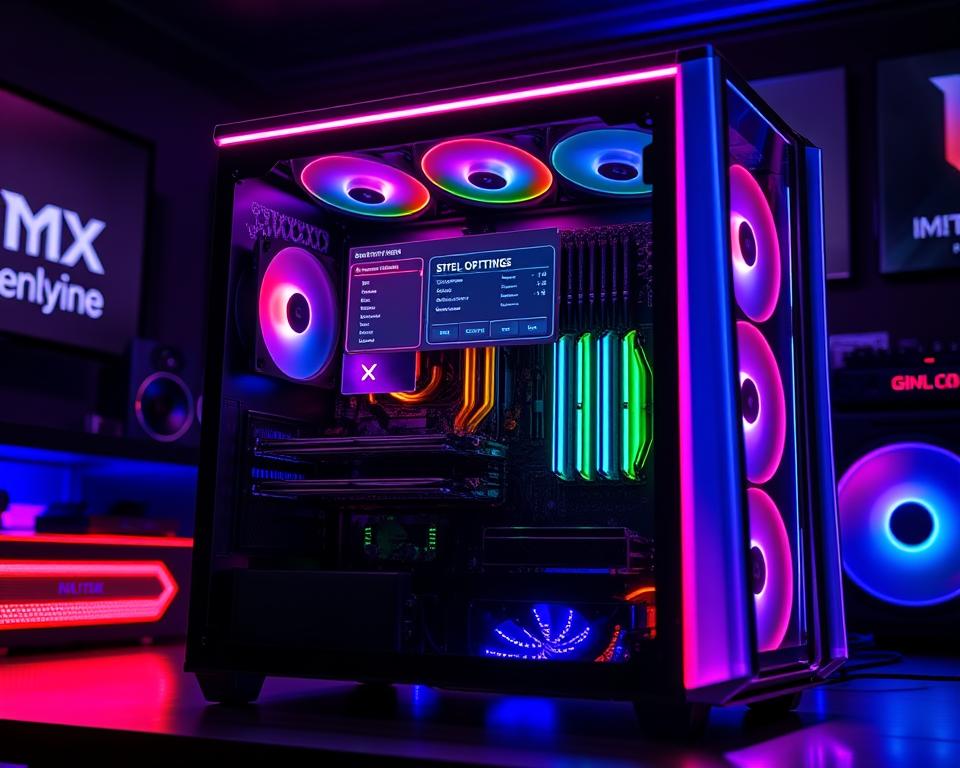
Installing Operating System and Drivers
Setting up a gaming computer starts with installing the operating system and drivers. This step can be tough, but with a good guide, it’s easy. You’ll make sure your gaming computer works well.
First, pick an operating system that fits your computer’s hardware. Windows 10 is a top choice for gamers. It works well with most gaming hardware. After choosing, you can install it on your computer.
Next, install drivers for your computer’s parts. This includes the graphics and sound cards. A gaming computer setup guide helps you install the right drivers correctly.
Remember a few things when installing drivers:
* Check the manufacturer’s site for the latest updates
* Make sure the drivers match your operating system
* Follow the instructions carefully to avoid mistakes
By following these tips and a good how to setup a gaming computer guide, your computer will run smoothly. You’ll get the best performance from your hardware.
Setting Up Your Gaming Peripherals
Building a gaming PC means picking the right peripherals for a great gaming experience. You’ll need high-resolution monitors, responsive keyboards, and precise mice. Look at resolution, refresh rate, and response time to find the best fit for your gaming needs.
A monitor with a high refresh rate, like 144Hz, makes games smoother. A mechanical keyboard and a gaming mouse with customizable buttons can boost your performance. A quality headset with surround sound adds to the fun, making games more immersive.
Some top gaming peripherals include:
- Monitors with high refresh rates (e.g., 144Hz or 240Hz)
- Mechanical keyboards with customizable backlighting
- Gaming mice with high-precision sensors
- Headsets with surround sound and noise-cancellation
Investing in the right gaming peripherals can elevate your gaming setup. With the best components, you’ll enjoy a more immersive and engaging experience. Whether you’re playing casually or competitively, the right gear makes a big difference.
| Peripheral | Recommended Specification |
|---|---|
| Monitor | 144Hz refresh rate, 1440p resolution |
| Keyboard | Mechanical switches, customizable backlighting |
| Mouse | High-precision sensor, adjustable DPI |
| Headset | Surround sound, noise-cancellation |
Optimizing Your Gaming Computer
To get the most out of your gaming computer, optimizing its performance is key. This means making tweaks to both hardware and software. Doing so ensures your system runs smoothly and efficiently. With these optimizations, you can create a top-notch gaming setup that offers an amazing gaming experience.
Some important steps for optimizing your gaming computer include updating graphics drivers and disabling unused programs. For instance, updating graphics drivers can increase gaming performance by up to 23%, as Nvidia found. Also, turning off background programs can free up system resources, enhancing gaming performance.
Other ways to optimize your gaming computer include lowering game resolution and using an ethernet cable for online gaming. Adjusting graphics details and anti-aliasing settings also helps. By using these strategies, you can greatly enhance your gaming experience and build a high-performance gaming setup.
Performance Tuning Tips
- Update graphics drivers regularly
- Disable unnecessary programs and background applications
- Adjust in-game video settings for optimal performance
- Use an ethernet cable instead of Wi-Fi for online gaming
By following these performance tuning tips and regularly maintaining your gaming computer, you can ensure it runs smoothly. This provides an exceptional gaming experience. Optimizing your gaming computer’s performance is an ongoing task that requires regular updates and tweaks to keep your system running well.
Troubleshooting Common Issues
Setting up a gaming computer can sometimes lead to problems. Knowing how to fix these issues is key. A good guide can help you find and solve problems fast. Slow performance is a common problem, often due to too many background programs or not enough RAM.
Upgrading to 16GB of RAM can cost under $30 and greatly boost your computer’s speed. Other issues, like random shutdowns or blue screens, might be caused by bad hardware or software. Overheating is another big problem that can make your computer shut down.
A good cooling system is crucial to avoid overheating. A gaming computer setup guide can offer advice on how to prevent these problems.
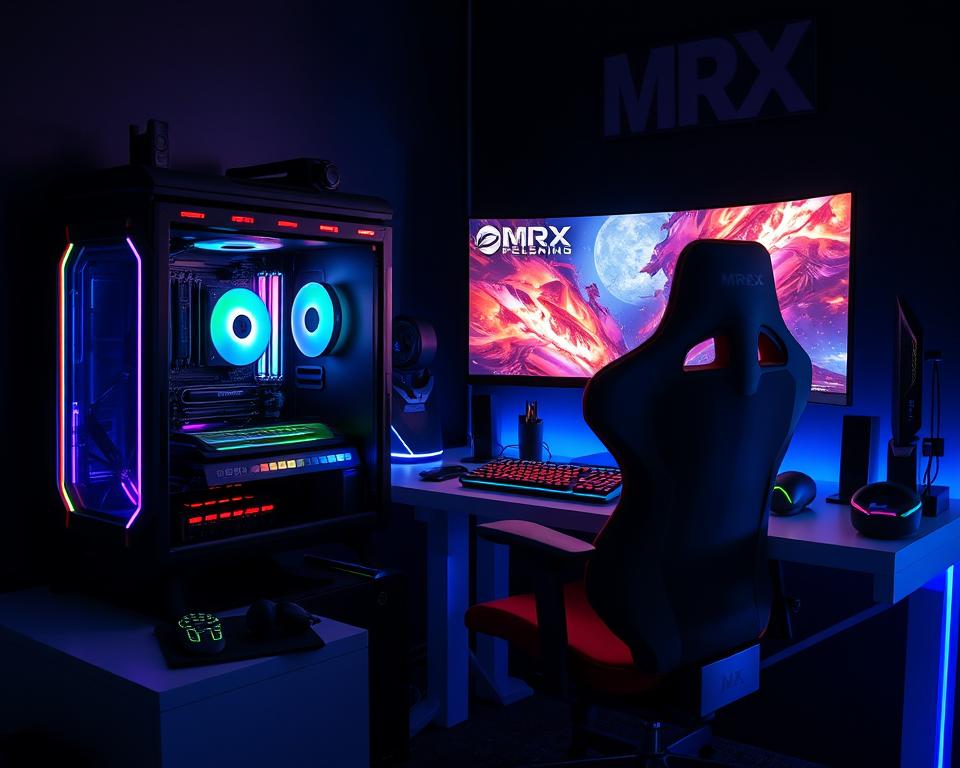
To fix common issues, you need to find out what’s causing them. Here are some common problems and how to solve them:
- Slow performance: Upgrade RAM or replace old HDD with SSD
- Random shutdowns: Check PSU wattage and ensure sufficient power
- Blue screens: Run a virus scan and check for faulty hardware
- Overheating: Ensure good cooling system and clean dust from fans
| Issue | Cause | Solution |
|---|---|---|
| Slow performance | Insufficient RAM or old HDD | Upgrade RAM or replace with SSD |
| Random shutdowns | Insufficient PSU power | Check PSU wattage and ensure sufficient power |
| Blue screens | Faulty hardware or software issues | Run a virus scan and check for faulty hardware |
Expanding Your Gaming Setup
After building a top-notch gaming computer, you can grow your setup in many ways. Think about adding upgrades and creating a home arcade. This will take your gaming to exciting new levels.
Future Upgrades to Consider
Technology keeps changing, so it’s important to stay ahead. Look into upgrading your CPU, GPU, or storage. This will make sure your system stays up-to-date with new games.
Getting a strong graphics card or a fast solid-state drive can really boost your gaming. It makes games look and run better.
Building a Home Arcade Experience
Turn your space into a cool home arcade. Add retro gaming consoles, arcade cabinets, and special controllers. This creates a fun and old-school gaming area.
Use a big, high-quality screen and a surround sound system. This will make games feel more real and exciting.
Expanding your gaming setup opens up new possibilities. You’ll get better performance, amazing visuals, and a more immersive experience. Let your gaming space show your passion and commitment.
FAQ
What are the essential components for building a high-performance gaming computer?
Key parts of a gaming computer include the CPU, GPU, and motherboard. The CPU, like the AMD Ryzen 9 7900X3D or Intel Core i9 14900K, is vital for top performance. The GPU, such as the Nvidia GeForce RTX 4090 or AMD Radeon RX 7900 XTX, handles graphics.
A good motherboard, like the Asus X670E-E ROG STRIX Gaming Wifi, ensures everything works well together.
How do I choose the right case for my gaming PC?
Picking the right case is key for your gaming PC’s performance. Look at size, design, and cooling options. A top-notch case, like the NZXT H5 Elite or Corsair 3500X, offers great airflow and cable management.
What should I consider when choosing a power supply unit (PSU) for my gaming PC?
The right PSU is crucial for your gaming PC’s power needs. Think about wattage and energy efficiency. A quality PSU, like the Corsair RMx RM1000w or Seasonic Prime TX-1300, ensures reliable power and efficiency.
How do I optimize and maintain my gaming PC for optimal performance?
Keeping your gaming PC in top shape is essential. Follow performance tips and regular maintenance. This includes setting up BIOS, installing the right OS and drivers, and fixing common problems.
How can I expand my gaming setup to take it to the next level?
Upgrading your gaming setup can make your experience better. Think about future upgrades and building a home arcade. This could mean adding more monitors, peripherals, or creating a gaming area at home.
Source Links
- How to Build a Gaming PC: A Complete Guide in 2024 – GeeksforGeeks
- How to Build a PC: The Ultimate Beginner’s Guide
- Step-by-Step Guide To Building a High-End Custom Gaming PC
- Everything You Need for a Dream PC Gaming Setup
- How to build a Gaming PC
- What’s the Most Important Component of a Gaming PC? – CyberPowerPC
- ESSENTIAL COMPONENTS OF A GAMING PC
- These Are the Most Important Components for Your Gaming PC
- How To Choose a PC Case? | Cooler Master
- How to Choose the Perfect Case for Your Custom PC Build?
- Building Your First Gaming PC: A Comprehensive Guide
- Memory Matters for Gaming in 2025
- The Ultimate RAM Guide for Gamers
- A Beginner’s Guide To Installing A HDD Or SSD For Your Gaming PC
- How to build a gaming PC for beginners: Putting it all together
- 10 BIOS settings to change after building your gaming PC
- Best BIOS Settings for Gaming PC Performance
- 5 Best BIOS Settings for Gaming – Improve Your FPS!
- First Things To Do With A New Gaming PC as a parent
- Making a monster: how to build a budget gaming PC without losing your mind
- Build Advice – Building a new gaming computer ?
- How to Set Up Your PC for Couch Gaming
- How to Build a Pro Gaming PC – 10 Gaming Setup Ideas
- How to Build Your Ideal Gaming Setup | Microsoft Surface
- Guide to optimizing your PC’s gaming performance | Asurion
- How to Optimize Your Windows PC’s Gaming Performance and Boost FPS
- Common PC Gaming Troubleshooting Tips: Problems And Solutions
- How to Troubleshoot Common Gaming PC Problems
- The Beginner’s Guide to Creating your Dream Gaming Setup
- How to Build a PC Gaming Setup With TV?
